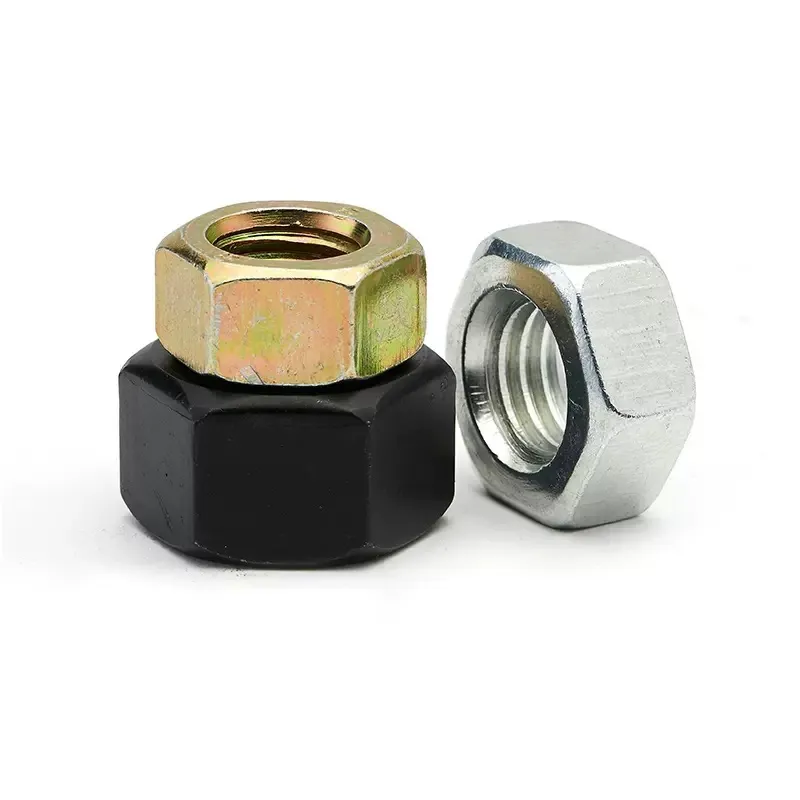

m10 washer
11월 . 13, 2024 12:53 Back to list
m10 washer
The Essential Role of M10 Washers in Mechanical Applications
In the realm of mechanical engineering and construction, the significance of seemingly small components cannot be understated. One such component that plays a crucial role in various assemblies is the M10 washer. This simple yet essential hardware piece is often overlooked but serves critical functions in ensuring the integrity and longevity of mechanical structures.
What is an M10 Washer?
An M10 washer is a flat disc, typically made of metal, which has a hole in the center that accommodates an M10 bolt or screw. The M denotes the metric system, specifically indicating that the washer is designed for bolts or screws with a nominal diameter of 10 millimeters. Washers come in various shapes and sizes, but the M10 variant is specifically tailored for M10 fasteners.
Types of M10 Washers
M10 washers can be categorized into several types based on their design and intended use
1. Flat Washers These are the most common type, offering a broad surface area to distribute the load of a bolt or screw. This helps in preventing damage to the connected materials and providing a secure fit.
2. Spring Washers Often used in applications where vibration is a concern, spring washers provide a degree of flexibility, allowing the assembly to maintain tension despite movement or changes in load.
3. Lock Washers Designed to prevent loosening due to vibrations or dynamic loads, lock washers can be particularly useful in automotive and industrial applications where rigidity is paramount.
4. Fender Washers With a larger outer diameter, fender washers are utilized to distribute the load over a larger area, making them ideal for thinner materials that might otherwise be damaged.
m10 washer

The Importance of Using Washers
The primary function of an M10 washer is to distribute the load of a fastener over a wider area, preventing damage to the surface materials and ensuring that the fastener remains secure. Without washers, bolt points can create pressure spots that lead to cracking, deformation, or even failure of the materials being joined.
Moreover, in applications involving vibration, washers can absorb some of the movement, helping to maintain the integrity of the connection. This is particularly important in automotive, aerospace, and machinery applications, where even minor loosening of components can lead to catastrophic failures.
Material Considerations
M10 washers are made from a variety of materials, including
- Steel Commonly used, steel provides strength and durability, making it suitable for high-load applications. - Stainless Steel Offering corrosion resistance, stainless steel washers are ideal for applications in moist or corrosive environments. - Plastic In some cases, plastic washers are employed for their insulating properties or when weight savings are crucial.
Choosing the right material is essential for ensuring that the washer can withstand the environmental conditions and loads it will encounter in service.
Conclusion
Despite their small size, M10 washers are indispensable components in mechanical assemblies. They serve multiple purposes, including load distribution, protection against wear, and prevention of loosening due to vibration. Understanding the different types of M10 washers and their specific applications can enhance both the performance and reliability of any mechanical system.
In conclusion, when assembling components in various industries, whether in construction, automotive, or machinery, it is vital to use the correct type of washer to ensure optimal performance and longevity. Engineers and builders must pay attention to the details, including the use of M10 washers, to build robust and reliable structures. Ultimately, these small components contribute significantly to the safety and effectiveness of larger assemblies, proving that good engineering often lies in the details.
Latest news
-
Hot Dip Galvanized Bolts-About LongZe|High Strength, Corrosion Resistance
NewsJul.30,2025
-
High-Strength Hot Dip Galvanized Bolts - Hebei Longze | Corrosion Resistance, Customization
NewsJul.30,2025
-
Hot Dip Galvanized Bolts-Hebei Longze|Corrosion Resistance&High Strength
NewsJul.30,2025
-
High-Strength Hot-Dip Galvanized Bolts-Hebei Longze|Corrosion Resistance&High Strength
NewsJul.30,2025
-
Hot Dip Galvanized Bolts-Hebei Longze|Corrosion Resistance&High Strength
NewsJul.30,2025
-
Hot Dip Galvanized Bolts - Hebei Longze | Corrosion Resistance, High Strength
NewsJul.30,2025

